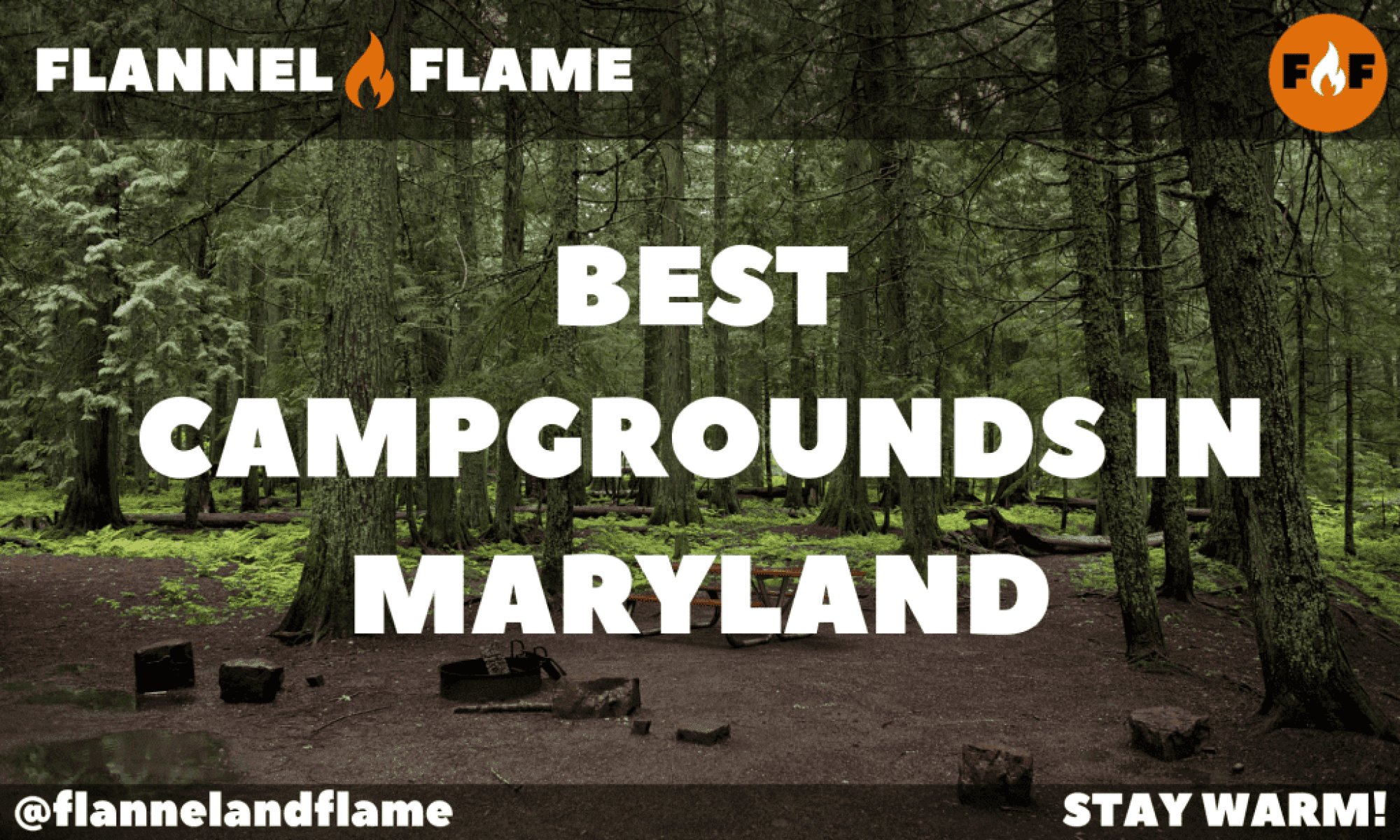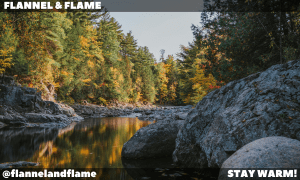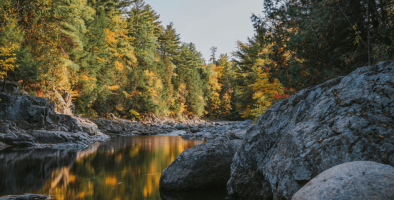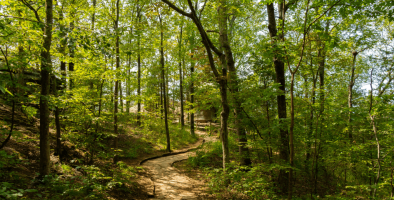Best Campgrounds in Maryland
Maryland may be small in size, but this Mid-Atlantic gem packs remarkable diversity into its borders. From the crashing waves of the Atlantic Ocean to the rolling hills of the Piedmont and the rugged mountains of the western counties, Maryland’s landscapes offer camping experiences for every preference. The state’s strategic location along major migratory bird routes, its 4,000 miles of shoreline along the Chesapeake Bay, and its four distinct seasons make it a year-round destination for outdoor enthusiasts. Let’s explore some of the best campgrounds in the Old Line State, where history and natural beauty create unforgettable camping experiences.
Assateague Island National Seashore
Number of Campsites: 148
Reservation Website: Recreation.gov
Address: 7206 National Seashore Lane, Berlin, MD 21811
On a barrier island where wild horses roam free against a backdrop of crashing Atlantic waves, Assateague Island National Seashore offers one of the most unique camping experiences on the East Coast. The campground stretches along the island’s ocean side, with sites nestled among low dunes that provide minimal protection from the elements but maximum immersion in this dynamic coastal environment.
The camping experience here feels delightfully primitive despite reasonable amenities. Cold-water showers and chemical toilets serve basic needs without detracting from the wild character of the location. Each site includes a picnic table and fire ring, essentials for beach camping where the persistent ocean breeze makes fire management both challenging and necessary for comfort when evening temperatures drop.
What makes Assateague truly extraordinary is the presence of wild horses, descendants of domestic animals that have adapted to island life over generations. These hardy creatures wander freely throughout the camping areas, their shaggy coats and sturdy builds testifying to lives spent facing salt spray and seasonal storms. While their presence creates magical photo opportunities, rangers remind visitors that these are wild animals requiring appropriate distance and respect.
Beyond horse watching, the island offers endless recreational possibilities. Miles of pristine beach invite long walks, shell collecting, and surf fishing for striped bass, bluefish, and drum. The bayside portion of the island provides calmer waters ideal for kayaking and canoeing, with chances to spot herons, egrets, and osprey fishing in shallow waters. Biking proves popular along the island’s paved road, while hiking trails through maritime forest and salt marsh showcase diverse ecosystems within short distances.
Weather dominates the Assateague experience—sometimes harshly. Summer brings biting insects and intense sun requiring appropriate protection, while persistent winds can make tent camping challenging for the unprepared. Yet these same elements create the wild beauty that draws visitors back repeatedly. Watching sunrise over the Atlantic from your campsite, the first golden light illuminating horses grazing among dunes, creates memories impossible to replicate in more developed settings.
Catoctin Mountain Park – Owens Creek Campground
Number of Campsites: 50
Reservation Website: Recreation.gov
Address: 10910 Foxville Road, Thurmont, MD 21788
Nestled in the forested highlands of western Maryland, Owens Creek Campground offers a mountain camping experience just a short drive from major East Coast population centers. This National Park Service campground, situated within Catoctin Mountain Park, provides access to a landscape of rocky outcrops, flowing streams, and hardwood forests that burst with color during autumn months.
The campground features widely spaced sites set among mature oak, hickory, and maple trees that provide welcome shade during summer and spectacular foliage in fall. Amenities strike a balance between comfort and rustic atmosphere, with modern restrooms and drinking water available but no hookups for RVs, helping maintain the natural character of the setting. The gentle sound of Owens Creek creates a soothing backdrop throughout the camping area.
What distinguishes Catoctin is its unique combination of natural beauty and historical significance. The park surrounds Camp David, the presidential retreat, giving the area an air of importance beyond its ecological value. While Camp David itself remains inaccessible to the public, hiking trails lead to dramatic viewpoints where visitors can appreciate the same landscape that has provided respite for world leaders since the Franklin D. Roosevelt administration.
The park’s extensive trail network offers options for every ability level, from short interpretive loops to challenging hikes leading to features like Chimney Rock and Wolf Rock, where massive quartzite formations create dramatic views and challenging scrambles. Wildflowers carpet the forest floor during spring, while diverse fungi make autumn a particularly rewarding season for naturalists and photographers.
Wildlife abounds in these protected forests. Black bears maintain a healthy population, requiring proper food storage by campers. White-tailed deer move gracefully among trees, especially during early morning and evening hours. Birdlife includes woodland specialists like scarlet tanagers, wood thrushes, and several woodpecker species whose drumming echoes through the forest canopy.
Evening temperatures in these mountains typically drop significantly even during summer months, making campfires both practical and atmospheric. As darkness falls, the forest comes alive with the calls of owls and the occasional yipping of distant coyotes. The relatively high elevation and distance from major cities allows for excellent stargazing on clear nights, with the Milky Way often visible stretching across the night sky.
Pocomoke River State Park
Number of Campsites: 220
Reservation Website: ParksReservation.Maryland.gov
Address: 3461 Worcester Highway, Snow Hill, MD 21863
Along the banks of one of America’s most pristine blackwater rivers, Pocomoke River State Park offers camping experiences that showcase Maryland’s Coastal Plain ecosystem at its finest. The park encompasses two separate camping areas—Shad Landing and Milburn Landing—situated on opposite sides of the Pocomoke River, each with its own character but sharing access to the tea-colored waters that give the river its distinctive appearance.
The Shad Landing campground features more amenities and larger camping areas, with sites set among loblolly pines and hardwoods typical of the region. Modern bathhouses with hot showers, electric hookups at many sites, and a camp store make this area appropriate for families and those seeking moderate comfort along with natural experiences. Milburn Landing offers a more rustic alternative, with fewer sites and facilities but a greater sense of isolation in a similar forest setting.
What makes Pocomoke exceptional is its access to the river and surrounding cypress swamps that create an atmosphere more reminiscent of the Deep South than typical Mid-Atlantic landscapes. The tannic waters of the Pocomoke flow dark and mysterious between banks lined with bald cypress trees, their knees protruding from shallow waters and their branches draped with Spanish moss. This environment, protected within the park and neighboring Pocomoke State Forest, harbors remarkable biodiversity and creates paddling opportunities unlike any other in Maryland.
Water activities dominate recreation at Pocomoke. Canoes and kayaks provide ideal vessels for exploring the main river channel and smaller tributaries where the forest canopy nearly meets overhead, creating green tunnels for paddlers to navigate. Fishing proves productive for species including largemouth bass, pickerel, and various panfish. A boat launch accommodates larger vessels for those wishing to explore more extensive portions of the river system.
Hiking opportunities include the Cypress Swamp Trail, where elevated boardwalks lead through wetlands allowing close observation of this unique ecosystem without environmental impact. The park’s location on the Eastern Shore places it within the Atlantic Flyway, making spring and fall migration periods especially rewarding for birdwatchers. Over 150 bird species have been recorded in the park, including prothonotary warblers, barred owls, and numerous waterfowl species.
Summer evenings often bring dramatic thunderstorms that pass quickly but leave impressive displays of lightning and renewed freshness to the air. When skies clear, the relatively rural location allows for good stargazing opportunities. The natural amphitheater created by the river and surrounding forest makes even small sounds carry across the water, with the calls of whip-poor-wills and chuck-will’s-widows providing distinctive summer evening soundtracks.
Cunningham Falls State Park – William Houck Area
Number of Campsites: 142
Reservation Website: ParksReservation.Maryland.gov
Address: 14039 Catoctin Hollow Road, Thurmont, MD 21788
In the rolling terrain of the Catoctin Mountains, Cunningham Falls State Park combines camping convenience with access to one of Maryland’s most beautiful waterfalls. The William Houck Area campground sits adjacent to a man-made lake that serves as a focal point for summer recreation, while nearby forested trails lead to the 78-foot cascading falls that give the park its name.
The campground features sites arranged in several loops, some designed for tents and others accommodating RVs with electric hookups. Mature oak and hickory trees provide dappled shade throughout most camping areas, their leaves creating natural canopies that moderate summer temperatures and burst into spectacular color during autumn months. Modern bathhouses with hot showers and flush toilets offer comfortable amenities without detracting from the natural setting.
What distinguishes Cunningham Falls is its perfect balance of natural features and recreational opportunities packed into a relatively small area. The lake area includes a sandy beach with designated swimming area, making it a popular destination for families during summer months. Rental boats allow exploration of the lake’s quiet coves, while anglers pursue trout, bass, and bluegill from shore or watercraft.
The park’s trail system offers options for various ability levels, with the falls trail being the most popular destination. This pathway follows a stream through mature forest before reaching multiple viewing areas for the cascading water. For more adventurous hikers, challenging routes lead up to rock outcroppings with expansive views of the surrounding countryside, particularly spectacular during fall foliage season when the mountains appear painted with reds, oranges, and golds.
Wildlife abounds throughout the park, with white-tailed deer frequently visible browsing at forest edges during morning and evening hours. Wild turkeys sometimes appear unexpectedly along trails or at campsite peripheries, while overhead, broad-winged hawks ride thermals rising from sun-warmed hillsides. Spring brings an explosion of wildflowers to the forest floor, including trillium, jack-in-the-pulpit, and various woodland orchids.
The park’s proximity to the historic town of Thurmont creates opportunities for campers to explore local culture and history when seeking variety beyond natural experiences. Nearby Catoctin Mountain Park (administered by the National Park Service) and Gambrill State Park expand available recreational options, making the area ideal for extended stays with varied activities.
As evening approaches, the campground comes alive with the scent of campfires and sounds of families gathering after days filled with exploration. Summer evenings sometimes feature ranger-led programs at the campground amphitheater, offering insights into the area’s natural and cultural history. When darkness falls completely, the surrounding forest creates a bubble of tranquility broken only by the occasional calls of barred owls questioning “who cooks for you, who cooks for you-all?”
Rocky Gap State Park
Number of Campsites: 278
Reservation Website: ParksReservation.Maryland.gov
Address: 12500 Pleasant Valley Road, Flintstone, MD 21530
Nestled against the eastern slope of Evitts Mountain in Maryland’s western reaches, Rocky Gap State Park surrounds Lake Habeeb, a 243-acre artificial lake whose clear waters reflect the forested ridges rising dramatically from its shores. The campground stretches along portions of the lakeshore, offering sites that range from primitive walk-in tents to full-service RV pads with electric, water, and sewer connections.
The camping areas feature thoughtful design, with bath houses strategically placed throughout, playgrounds for children, and easy access to the lake and trail system. Sites vary in size and privacy, with some offering direct lake views while others nestle into the mixed hardwood forest characteristic of the region. The park’s campground consistently ranks among Maryland’s most popular, requiring reservations well in advance, particularly for summer weekends and peak fall foliage periods.
What makes Rocky Gap exceptional is its combination of dramatic mountain scenery with accessible recreation opportunities. The mile-and-a-half-long lake features a beach area with designated swimming, boat rentals, and productive fishing for trout, bass, and panfish. The 5.3-mile Lake Habeeb Trail circumnavigates the water, occasionally climbing to provide elevated views before returning to shoreline level.
For more adventurous visitors, the challenging 4.5-mile Evitts Mountain Trail ascends to the ridge crest, rewarding hikers with expansive views across the Cumberland Valley into neighboring Pennsylvania. The Canyon Overlook Trail, though shorter, provides equally dramatic vistas from massive sandstone outcroppings above the gorge that holds the lake. Throughout these trails, interpretive signs explain geological features and forest ecology, adding educational value to recreational experiences.
The park’s location in Maryland’s mountainous western region creates distinctive seasonal experiences. Spring brings an explosion of wildflowers and the return of migratory birds to newly leafed-out forests. Summer offers warm days perfect for water recreation, followed by evenings cool enough for campfire comfort. Fall transforms the landscape with spectacular foliage that typically peaks in mid-October, while winter sometimes brings enough snow for cross-country skiing on park trails.
Wildlife observation opportunities abound throughout the park. Black bears maintain a presence in the surrounding mountains, though encounters remain rare. White-tailed deer browse forest edges during morning and evening hours, while Eastern box turtles might be encountered crossing paths during warmer months. Birdlife includes woodland species like pileated woodpeckers, whose distinctive calls and drumming echo through the forest, and various raptors soaring on thermals rising from sun-warmed mountainsides.
As darkness falls over the lake, the mountains create a natural bowl that limits light pollution from distant urban areas, allowing impressive views of the night sky when conditions permit. The sound of gentle waves against the shoreline provides a soothing background for stargazing, completing days filled with mountain adventure in one of Maryland’s most scenic state parks.
Janes Island State Park
Number of Campsites: 103
Reservation Website: ParksReservation.Maryland.gov
Address: 26280 Alfred J. Lawson Drive, Crisfield, MD 21817
On Maryland’s Eastern Shore, where land gradually surrenders to the Chesapeake Bay in a maze of tidal marshes and shallow waterways, Janes Island State Park offers a camping experience defined by water and sky. The campground sits on the mainland portion of the park, while the island itself—accessible only by boat—remains undeveloped, preserving over 2,900 acres of salt marsh, tidal creeks, and sandy beaches for exploration.
The camping area features well-maintained sites with options for both tent and RV campers, including some with electric hookups. Large loblolly pines provide welcome shade throughout the campground, their height and straight trunks characteristic of coastal plain forests. Modern bathhouses with hot showers, a camp store for basic supplies, and a fish cleaning station cater to campers’ essential needs without excessive development that would detract from the natural setting.
What distinguishes Janes Island is its extraordinary water access and paddling opportunities. The park maintains a marina, boat ramp, and kayak/canoe rental facility, making water exploration accessible for all visitors. A network of marked water trails totaling over 30 miles winds through the marshes of Janes Island itself, creating protected paddling routes where even novices can navigate safely while experiencing the park’s rich ecological systems.
Wildlife defines the Janes Island experience, particularly birdlife associated with Chesapeake Bay habitats. Great blue herons wade through shallow waters, their patient hunting stance an emblem of these wetlands. Ospreys build massive nests on channel markers, diving spectacularly for fish in surrounding waters. During migration periods, the marshes and mudflats attract thousands of shorebirds and waterfowl, creating one of the Eastern Shore’s premier birdwatching destinations.
Beyond wildlife observation, Janes Island offers superb fishing and crabbing opportunities. Anglers pursue striped bass, spot, croaker, and bluefish from shore or boats, while blue crabs—a Chesapeake Bay delicacy—can be caught using simple hand lines and chicken necks off the park’s bulkhead. The nearby town of Crisfield, Maryland’s southernmost community and self-proclaimed “Seafood Capital of the World,” provides additional fishing charter opportunities and seafood dining experiences.
Weather dramatically influences the Janes Island experience. Summer brings hot, humid conditions but also spectacular thunderstorms that build over the Chesapeake before releasing their energy in dramatic lightning displays. Fall offers perhaps the most pleasant camping conditions, with moderate temperatures, fewer insects, and spectacular sunsets that set the sky and water ablaze with color. In any season, the vast open horizons create an atmosphere where sky dominates, making sunrise and sunset daily events of extraordinary beauty.
New Germany State Park
Number of Campsites: 39
Reservation Website: ParksReservation.Maryland.gov
Address: 349 Headquarters Lane, Grantsville, MD 21536
High in the mountains of Western Maryland, where elevations exceed 2,500 feet and the climate more closely resembles New England than the Mid-Atlantic, New Germany State Park offers a small, intimate camping experience centered around a 13-acre lake. The campground’s limited size creates an atmosphere of peaceful seclusion, with widely spaced sites set among mature hardwood forests that provide abundant shade and natural beauty.
The camping area features basic but well-maintained amenities, including clean bathhouses with hot showers. Sites accommodate tents and smaller RVs, though no hookups are available, helping maintain the park’s rustic character. Each site includes the standard picnic table and fire ring, with ample flat space for setting up camp. The small number of sites means campers often find themselves alone on weekdays, particularly during spring and fall seasons.
What makes New Germany exceptional is its perfect combination of accessible wilderness and recreational variety. The lake area includes a small beach with summer swimming, fishing opportunities for trout and bass, and rental rowboats for exploring quiet coves. Over 10 miles of well-marked trails radiate from the central lake area, ranging from gentle lakeside paths to more challenging routes that connect with the extensive trail system of surrounding Savage River State Forest.
The park’s elevation creates distinctive ecological communities and seasonal experiences. Spring comes later here than in lower-elevation parts of Maryland, with wildflowers sometimes blooming weeks after they’ve faded elsewhere. Summer temperatures typically remain moderate even when nearby lowlands swelter in humidity. Fall brings spectacular foliage as maple, oak, beech, and birch trees transform the landscape into a canvas of reds, oranges, and golds. Winter often brings substantial snowfall, transforming the park into a destination for cross-country skiing and snowshoeing on trails groomed specifically for these activities.
Wildlife observation opportunities reflect the park’s mountain character. Black bears maintain a significant presence in surrounding forests, requiring proper food storage by campers. Snowshoe hares—rare in Maryland but present in these higher elevations—occasionally appear along forest edges during dawn and dusk hours. Birdlife includes northern species near the southern limits of their range, drawing enthusiastic birders during migration periods and breeding season.
The park’s location in Garrett County places it within easy driving distance of numerous other outdoor destinations, including Swallow Falls State Park with its impressive waterfalls, Deep Creek Lake for larger-scale water recreation, and the extensive wilderness of Savage River State Forest. This concentration of natural areas makes New Germany an excellent base camp for extended exploration of Maryland’s mountainous western region.
As evening approaches, the surrounding forest creates a sense of intimacy and separation from the outside world. The small lake reflects the changing sky as day transitions to night, while campfires flicker to life across the camping area. The higher elevation and rural location result in notably cooler evenings, even in summer, making sleeping conditions comfortable and campfires practical year-round. The profound quiet of these mountains, broken only by the occasional call of a barred owl or distant coyote, reminds visitors of the natural rhythms that define this special place.
Point Lookout State Park
Number of Campsites: 143
Reservation Website: ParksReservation.Maryland.gov
Address: 11175 Point Lookout Road, Scotland, MD 20687
At the southernmost tip of Maryland’s western shore, where the Potomac River meets the Chesapeake Bay, Point Lookout State Park occupies a peninsula steeped in both natural beauty and historical significance. The campground stretches along the Potomac shoreline, with sites arranged in several loops set among loblolly pines and scattered hardwoods characteristic of the Coastal Plain region.
The camping areas feature a range of options, from basic tent sites to full-service campsites with electric, water, and sewer connections. Modern bathhouses with hot showers, a camp store for essentials, and ample drinking water sources throughout the campground provide necessary amenities without excessive development. Many sites offer water views or short walks to shoreline areas, creating constant awareness of the peninsular setting between river and bay.
What distinguishes Point Lookout is its extraordinary combination of recreational opportunities, natural features, and historical significance. The park encompasses over 1,000 acres, including extensive shoreline along both the Potomac River and Chesapeake Bay, creating diverse water access points for fishing, crabbing, swimming, and boating. A fishing pier extends into the Potomac, while a causeway provides access to a protected swimming beach complete with bathhouse and concession stand during summer months.
History permeates Point Lookout, most significantly as the site of a Civil War prison camp that once held over 52,000 Confederate soldiers. A reconstructed fort and museum tell this somber story, while a cemetery and monuments honor those who died during imprisonment. Earlier historical layers include the park’s lighthouse—one of the oldest on the Chesapeake—and significance during the War of 1812 when British forces used the point during their campaign against Washington, D.C.
Wildlife observation opportunities reflect the peninsula’s diverse habitats. Osprey build massive nests on channel markers and specially constructed platforms, their fishing dives providing spectacular displays during summer months. Bald eagles maintain territories along forested sections of shoreline, while herons and egrets wade through shallow waters hunting for small fish and crustaceans. During migration periods, the point’s strategic location concentrates birds moving along coastal flyways, creating excellent birdwatching opportunities.
The peninsula’s geography creates distinctive weather patterns and spectacular sky events. Summer thunderstorms often approach visibly across the water, their dramatic cloud formations and lightning displays unobstructed by landforms or vegetation. Fall brings crisp clarity to the air, with visibility extending miles across the bay on good days. Winter transforms the landscape into a stark yet beautiful place where the meeting of cold air and relatively warmer water sometimes creates ethereal fog banks that roll across the peninsula.
As night falls, the distant lights of boats working the waters of the Potomac and Chesapeake create a peaceful backdrop for camping experiences. The lighthouse beam sweeps regularly across the water, a reminder of the point’s maritime heritage and navigational significance. The combination of history, natural beauty, and water access makes Point Lookout one of Maryland’s most distinctive camping destinations, a place where past and present merge at the meeting of great waterways.
Final Thoughts About Camping in Maryland
Maryland’s diverse landscapes create camping opportunities ranging from coastal islands to mountain forests, from freshwater lakes to tidal marshes. Each campground offers its own character and recreational focus, reflecting the remarkable ecological diversity packed into one of America’s smaller states. Whether you’re seeking water adventures, mountain escapes, historical experiences, or wildlife observation, Maryland’s campgrounds provide gateways to natural experiences that might surprise visitors familiar only with the state’s urban corridors. As you plan your Maryland camping adventure, consider the varied options presented here—each offering its own portal to the natural and cultural heritage of the Old Line State.
Other States to Explore
More from Flannel & Flame…
- Mexican Bean SaladBold, zesty, and bursting with color, this Mexican Bean Salad is a side dish that brings the flavor anywhere you roam. A hearty mix of black, kidney, and cannellini beans comes together with crisp bell peppers, sweet corn, and red onion, all tossed in a citrusy vinaigrette loaded with fresh cilantro and just the right… Read more: Mexican Bean Salad
- Cheesy PotatoesGolden, gooey, and loaded with flavor, these Dutch Oven Cheesy Potatoes are a campfire favorite that never disappoints. Tender hash browns are layered with melted cheese, savory seasonings, and just the right amount of smoky goodness from the fire. Baked slow and steady in a Dutch oven, this comforting side dish is perfect alongside grilled… Read more: Cheesy Potatoes
- Alternatives to S’Mores: Sweet Twists and Campfire Treats You’ll CraveThere’s something undeniably magical about a gooey s’more melting between your fingers under a starlit sky. The way the chocolate gets just soft enough, the marshmallow smolders to a golden hue (or charred to a crisp, if that’s your thing), and the graham crackers give that perfect crunch — it’s the taste of summer, nostalgia,… Read more: Alternatives to S’Mores: Sweet Twists and Campfire Treats You’ll Crave
- Best Hiking in New YorkWilderness, waterfalls, and wonder from the Catskills to the Adirondacks New York might be synonymous with skyscrapers, yellow cabs, and a certain iconic skyline—but trust me, beyond the hustle of the city, the Empire State hides some of the most jaw-dropping trails in the Northeast. We’re talking misty mountaintops, mossy forests, gorges carved by ancient… Read more: Best Hiking in New York








